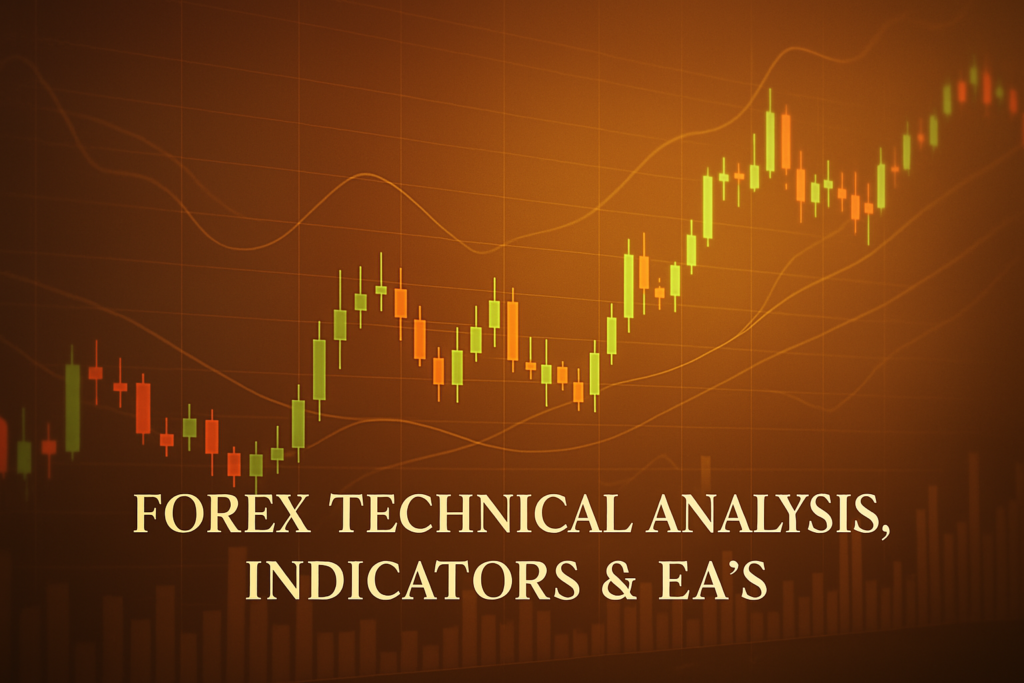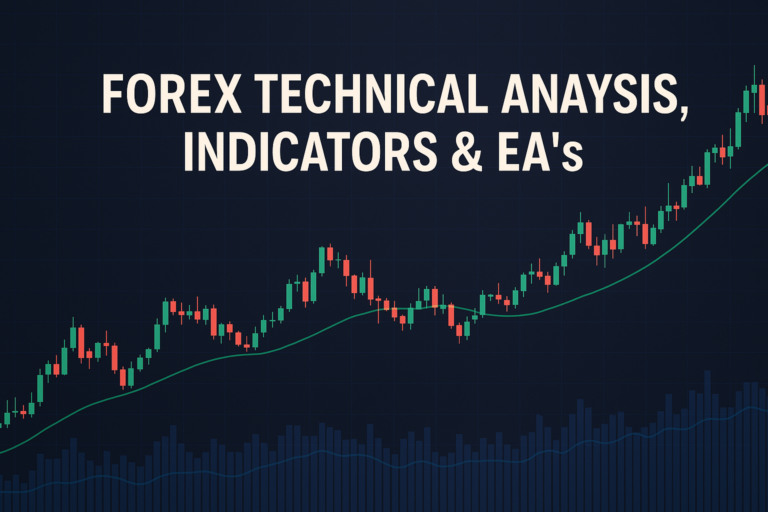
The Commodity Channel Index (CCI) is essential for traders looking to identify market trends and improve their Forex trading strategies.
The Commodity Channel Index (CCI) is a popular tool in Forex trading. It helps traders understand price trends and market momentum. By measuring the difference between the current price and its average price over a specific period, CCI can indicate whether a currency is overbought or oversold.
Yet, many traders, both beginners and professionals, often struggle to use the Commodity Channel Index (CCI) effectively. This difficulty can stem from a lack of understanding of how to interpret the index. Traders may also find it challenging to apply CCI in their trading strategies. Thus, grasping the CCI’s concepts and applications is crucial for maximizing its benefits.
This article will guide you through the world of the Commodity Channel Index (CCI), providing insights into its workings, history, advantages, and disadvantages. You’ll also find practical strategies to implement in your trading.
Additionally, some traders face issues like mt4 freezing issues in forex trading, which can hinder their analysis and trading decisions. Understanding and solving these problems can significantly improve trading performance.
What is a Commodity Channel Index (CCI)?
The Commodity Channel Index (CCI) is a versatile indicator that traders use to analyze price movements. In simple terms, it shows how far the current price is from its average price over a specific time. When the CCI value is high, it indicates that the price is higher than its average, suggesting potential overbought conditions. Conversely, a low CCI value may indicate that the price is below average, suggesting oversold conditions.
Types of Commodity Channel Index (CCI)
There are different types of CCI, including Simple, Exponential, and Weighted. Each type calculates the average price differently, which can affect the CCI readings. For example, a Simple CCI uses simple averages, while an Exponential CCI gives more weight to recent prices, making it more responsive to price changes.
How Commodity Channel Index (CCI) Smooths Out Price Action
The CCI helps to smooth out price action by averaging prices over a specific period. This averaging reduces noise from minor price fluctuations, allowing traders to see the overall trend more clearly. As a result, the CCI can help identify potential buy or sell signals based on the trend direction.
Common Periods Used and Why
Traders commonly use periods like 14, 20, or 25 for calculating CCI. A 14-period CCI is popular because it strikes a balance between sensitivity and reliability. Shorter periods may react too quickly, leading to false signals, while longer periods may miss out on timely entry points. Choosing the right period depends on the trader’s strategy and market conditions.
The History of Commodity Channel Index (CCI): How It Became Popular
Origin of Commodity Channel Index (CCI)
The Commodity Channel Index (CCI) was developed by Donald Lambert in the 1980s. He created it to identify cyclical trends in commodity prices. Over time, traders realized its effectiveness in Forex trading, leading to its widespread adoption.
When Did Traders Start Using It Widely?
Traders began using CCI widely in the late 1990s and early 2000s. With the rise of digital trading platforms, more traders gained access to this indicator. Its ability to indicate overbought and oversold conditions made it a favorite among both novice and experienced traders.
Real-Life Stories
Many professional traders have credited the CCI for their success. For instance, a trader might have used CCI to spot a rising trend in a currency pair, allowing them to make informed decisions on when to enter and exit trades. Such stories highlight the potential of the CCI in creating profitable trading strategies.
Advantages and Disadvantages of Commodity Channel Index (CCI)
Advantages:
- Helps Identify Trends Easily: CCI can quickly show whether a currency is trending up or down, making it easier to identify potential trading opportunities.
- Useful for Dynamic Support and Resistance: Traders can use CCI to determine key levels where price might reverse, aiding in decision-making.
- Works Well for Crossover Strategies: CCI can signal when to buy or sell based on crossovers, making it a versatile tool.
Disadvantages:
- lags Behind Price Movements: CCI may not always react quickly to sudden price changes, leading to missed opportunities.
- Can Give False Signals in Sideways Markets: During sideways trends, CCI may produce unreliable signals, causing confusion for traders.
How to Apply Commodity Channel Index (CCI) on MT4 & MT5
Step-by-Step Guide to Adding Commodity Channel Index (CCI) on Charts
To add the CCI indicator on MT4 or MT5, go to the “Insert” menu, select “Indicators,” then choose “Trend” and finally “Commodity Channel Index.” It will then appear on your chart.
Customizing Commodity Channel Index (CCI) Settings
You can customize the CCI settings by right-clicking on the indicator and selecting “Properties.” Here, you can adjust periods, colors, and types to suit your trading style.
Saving Templates for Easy Application
Once you’ve customized your CCI settings, you can save them as a template. Right-click on your chart, select “Template,” and then “Save Template.” This way, you can apply your settings quickly in the future.
5 to 7 Trading Strategies Using Only Commodity Channel Index (CCI)
Strategy Name: All Time Frame Strategy
Best Time Frame to Use: M5 to D1
How It Works: Look for CCI values above +100 to buy and below -100 to sell.
Example of Trade Setup: If the CCI crosses above +100 on the M5 chart, consider entering a buy position.
Strategy Name: Trending Strategies
Best Time Frame to Use: M15 to H1
How It Works: Trade in the direction of the trend. Buy when CCI is above 0, and sell when it’s below 0.
Example of Trade Setup: If the CCI is above 0 and the price is making higher highs, consider entering a buy position.
Strategy Name: Counter Trade Strategies
Best Time Frame to Use: H1 to D1
How It Works: Look for overbought and oversold conditions. Sell if CCI is above +100 and buy if it’s below -100.
Example of Trade Setup: If the CCI reaches +120, consider entering a sell position.
Strategy Name: Swing Trades Strategies
Best Time Frame to Use: H4 to D1
How It Works: Look for CCI divergence to signal potential reversals.
Example of Trade Setup: If the price is making new highs but CCI is declining, it indicates a potential reversal, where you can consider selling.
For traders, issues such as platform crashes can disrupt their trading activities. Understanding how to handle these problems can help maintain a smooth trading experience.
Top 10 FAQs About Commodity Channel Index (CCI)
1. What is the Commodity Channel Index (CCI)?
The CCI is an indicator that measures the difference between the current price and its average price over a specified period.
2. How do I calculate CCI?
CCI is calculated using the formula: CCI = (Current Price – Average Price) / (0.015 x Mean Deviation).
3. What does a high CCI mean?
A high CCI value (above +100) indicates that the asset may be overbought.
4. What does a low CCI mean?
A low CCI value (below -100) suggests that the asset may be oversold.
5. Can CCI be used for all markets?
Yes, CCI can be applied to various markets, including stocks, commodities, and Forex.
6. How reliable is CCI?
CCI can be reliable but may produce false signals during sideways markets.
7. How should I set my CCI periods?
Common periods are 14, 20, or 25, depending on your trading strategy.
8. Can I use CCI with other indicators?
Yes, many traders combine CCI with other indicators for better accuracy.
9. What time frames work best with CCI?
CCI is versatile and can be used on all time frames, depending on your strategy.
10. Is CCI suitable for beginners?
Yes, CCI is user-friendly and a great tool for beginners to learn market trends.
Conclusion
The Commodity Channel Index (CCI) is a powerful tool for traders. Understanding its functions and applications can lead to better trading decisions. Remember to test your strategies in a demo account before risking real money. This practice will help you gain confidence and improve your trading skills.
As you embark on your trading journey with the Commodity Channel Index (CCI), stay patient and keep learning. The more you understand this tool, the better your trading outcomes will be.
Need more clarity on this concept? This article explains it in simple terms TradingView, Reuters
Expand Your Knowledge
- 📌 Forex Trading Learning Road Map
- 📌 Forex Trading Course with no Fees
- 📌 Forex Trading Issues, Problems, and Solutions
- 📌 Forex Daily Forecast & Live Updates
- 📌 Forex Fundamental & News Analysis: Tomorrow’s Market Movers & Trade Opportunities
- 📌 Forex Education Hub: Learn & Profit
- 📌 Forex Technical Analysis, Indicators & EA’s
Start Trading Today
Ready to take your forex trading to the next level? Open an account with Exness, one of the most trusted platforms in the industry. 👉 Sign Up Now and start trading with confidence!
Exness stands out with ultra-low spreads for mini traders, instant withdrawals, and zero spread accounts for pro traders. Trusted since 2008, Exness offers lightning-fast execution, no hidden fees, and a secure, transparent trading environment—giving you the edge you need to succeed. 🚀 Join now and trade smarter!
Watch this helpful video to better understand Commodity Channel Index (CCI):
Note: The video above is embedded from YouTube and is the property of its original creator. We do not own or take responsibility for the content or opinions expressed in the video.
The Commodity Channel Index (CCI) is a widely used trading indicator that helps traders assess market momentum and identify potential overbought or oversold conditions. Originally developed by Donald R Lambert for analyzing the commodity market, traders have since adapted the CCI for various asset classes. The CCI oscillates between fixed levels of +100 and -100, indicating that when it rises above +100, the market is considered overbought, and when it falls below -100, it is deemed oversold. This behavior of the CCI makes it a useful tool for traders looking to make informed decisions based on market conditions. The CCI is calculated using a formula that compares the typical price against a 21-period simple moving average, scaled by a constant, which helps to keep the indicator within the bounds of +100 and -100 most of the time.
When utilizing the CCI in trading, traders can employ several strategies. One common approach is to look for extreme readings to identify potential buying or selling opportunities. Traders typically go long when the CCI falls below -100, indicating an oversold market, and short when the CCI rises above +100, signaling an overbought market. However, it is vital to remember that this method works best in sideways markets rather than trending markets. Additionally, traders can look for divergences between the CCI and market price, where the CCI may show a different trend than the price action. These divergences can signal potential trend reversals. Lastly, combining the CCI with moving averages can help traders define the overall market trend, allowing for more strategic trading decisions. For instance, traders might consider going long when the market is above the 200-day moving average and the CCI is below -100, or short when the market is below the 200-day moving average and the CCI is above +100.
In the world of Forex trading, choosing the right broker is crucial for success. A well-reviewed broker can significantly impact your trading experience, ensuring you have access to favorable trading conditions, platforms, and support. To learn more about the various factors to consider when selecting a Forex broker, check out our comprehensive forex broker review. Understanding these key insights will help you make informed decisions and enhance your trading journey.



